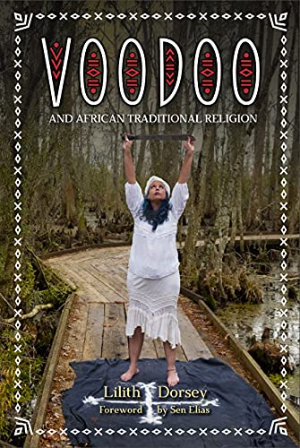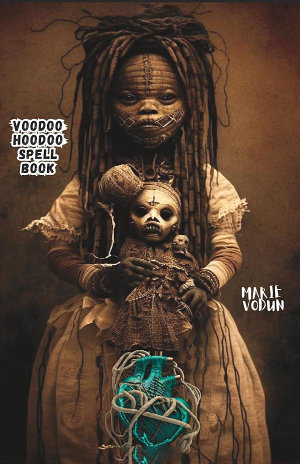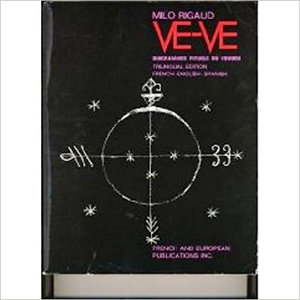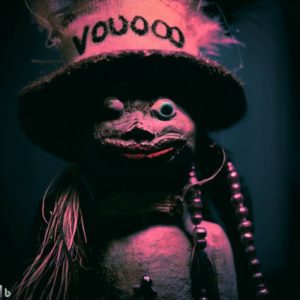
Voodoo, also known as Vodou or Vodun, is an Afro-Caribbean religion that has captivated the imagination of people around the world. Often misunderstood and misrepresented, Voodoo has been subject to sensationalized portrayals in popular culture, with images of zombies and voodoo dolls dominating public perception. However, these depictions bear little resemblance to the rich and diverse spiritual practices and beliefs of Voodoo.
In this guide, we will delve into the fascinating world of Voodoo, exploring its origins, core beliefs, rituals, and the cultural significance it holds for its practitioners. By debunking common misconceptions and shedding light on the true essence of Voodoo, we aim to provide a deeper understanding of this captivating religion
Voodoo’s West African Roots
Voodoo, also known as Vodou, is an Afro-Caribbean religion that originated in Haiti and is a combination of West African traditions and Roman Catholicism. Its roots date back to the 17th century when African slaves were brought to the Caribbean to work on sugar plantations. They brought with them their religious beliefs and practices, which were eventually adapted and merged with elements of Catholicism.
The West African roots of voodoo can be traced back to the Yoruba people of Nigeria and Benin, who believed in a supreme being known as Olodumare. They also worshiped numerous spirits or deities, known as Orishas, who were believed to have control over various aspects of life such as love, fertility, and prosperity.
Voodoo incorporates these beliefs in a similar manner, with a supreme being known as Bondye and a pantheon of spirits or loas. These spirits are believed to have the power to influence the lives of their followers and are often invoked through rituals such as dance, music, and chanting.
The Syncretic Blend: African Traditions and Catholicism
When the Yoruba were brought to the Americas as slaves, they were forced to abandon their traditional beliefs and adopt the religion of their captors, which was usually Catholicism. However, rather than abandoning their own beliefs entirely, they incorporated elements of Catholicism into their traditional practices, creating a new syncretic religion that reflected their own cultural heritage.
One of the most important aspects of voodoo is the concept of possession, in which a spirit or deity takes control of a person’s body. This is similar to the practice of Catholicism, in which the Holy Spirit is believed to enter the body during certain religious ceremonies. This similarity has helped to facilitate the blending of the two traditions, as both involve the idea of a divine presence entering the physical world.
Another important aspect of voodoo is the use of snakes, which are believed to have special spiritual power. This is also reflected in many West African religions, where snakes are associated with fertility and healing. In voodoo, snakes are often used in religious ceremonies and are believed to possess the power to heal and protect.
Despite the incorporation of Catholicism into voodoo, the religion has retained many of its African roots. For example, the orisha of the Yoruba have been transformed into the loa of voodoo, each with their own distinct personalities and powers. The use of divination, animal sacrifice, and herbal medicine are also important aspects of voodoo that have their roots in traditional African religions.
Persecution and Misrepresentation of Voodoo
One of the most common misconceptions about voodoo is that it is associated with black magic and evil spirits. In reality, voodoo is a peaceful and life-affirming religion that is focused on respect for ancestors, nature, and the divine. It is a way of life that promotes healing, balance, and harmony.
Despite this, voodoo has faced persecution throughout history. In the Americas, it was suppressed by slave owners who feared its potential for rebellion. In Haiti, voodoo was banned by the government until the 1980s, and practitioners were often targeted by the police and military.
Even today, voodoo continues to be misrepresented in popular culture. Movies and television shows often depict it as a dark and dangerous practice, perpetuating harmful stereotypes and misconceptions. You can’t even do a search for Voodoo on popular shopping sites without turning up representations of Voodoo as some form of evil black magic.
Beliefs of Voodoo
Bondye: The Supreme Creator
At the core of Voodoo lies the belief in a supreme being known as Bondye. Bondye is considered the creator of the universe and is responsible for everything in it. This supreme being is believed to be omnipotent, omniscient, and omnipresent.
Bondye is often depicted as a distant deity who does not interfere in the day-to-day lives of humans. Instead, the spirits, called Loa, are the ones who are worshipped and invoked by Voodoo practitioners. These spirits are believed to be intermediaries between humans and Bondye.
The concept of Bondye is central to the Voodoo religion, and it is believed that all life and existence is a gift from this supreme creator.
Loa: The Spirits of Voodoo
Loa, also known as Lwa, are the spirits worshiped in the religion of Voodoo. Loa are seen as intermediaries between humans and the supreme creator, Bondye. Vodouisants believe that Loa can be invoked through rituals and ceremonies, and they can help humans in various aspects of life, including health, wealth, and relationships.
There are hundreds of Loa in Voodoo, each with its unique personality, attributes, and symbols. Some of the commonly worshiped Loa include Papa Legba, the gatekeeper of the spirit world; Erzulie Freda, the goddess of love and beauty; Baron Samedi, the lord of the dead; and Damballa, the serpent god of life and wisdom.
Loa are often represented by symbols and offerings during Voodoo ceremonies. Each Loa has its preferred offerings, such as candies, rum, tobacco, and flowers. Loa can also possess human bodies during ceremonies, and this possession is seen as a sign of communication between the spirit world and the human world.
Possession and Spiritual Connection
Possession is a key aspect of Voodoo, and it is believed that during certain ceremonies, spirits known as Loa can possess the bodies of humans. This possession is not seen as a negative experience, but rather a positive one, as it is believed that the Loa are able to provide guidance and healing to the person being possessed. In fact, many Vodouisants seek out possession as a way to connect with the spirits and gain insight into their lives.
The process of possession is a complex one, involving a variety of rituals and preparations. The person being possessed will often fast and meditate in order to prepare themselves for the experience. During the ceremony, they will be surrounded by other Vodouisants, who will sing and dance in order to create an atmosphere that is conducive to possession. When the Loa arrive, they will often be greeted with offerings and symbols that are associated with their particular personality and attributes.
Once possession occurs, the person being possessed will often take on the persona of the Loa, speaking and acting in a way that is consistent with their personality. This can be a powerful experience, as it allows the person to connect with the spirit world and gain insight into their own lives.
Spiritual connection is also a key aspect of Voodoo, and it is believed that through rituals and ceremonies, individuals can connect with the divine and gain insight into their own lives. These rituals often involve the use of symbols and offerings, as well as the creation of altars and shrines.
Universal Energy and the Soul
Universal energy and the soul are integral concepts in voodoo. According to voodoo beliefs, every living thing has a soul that can leave the body during dreams and spirit possession. The followers of voodoo also believe in a universal energy that permeates all existence, which can be accessed through spiritual practices.
In voodoo, possession is not seen as a negative experience, but rather a positive one, as it is believed that the loa are able to provide guidance and healing to the person being possessed
Voodoo Rituals and Practices
Offerings and Devotions to the Loa
Offerings and devotions to the Loa are an important part of Voodoo practices. The Loa are spiritual beings that possess the bodies of humans during Voodoo ceremonies, and they are believed to possess great power and influence over the natural world.
To honor and appease the Loa, practitioners of Voodoo make offerings and perform devotions to them. These offerings can include a variety of items such as food, drink, candles, and flowers. The specific offering will depend on the individual Loa being honored and the nature of the ceremony.
Devotions to the Loa often involve singing, dancing, and drumming. These actions are believed to help facilitate the possession of the Loa and to create a stronger connection between the spiritual and physical worlds. In some cases, Voodoo practitioners will also make symbolic sacrifices to the Loa, such as sacrificing a chicken or a goat.
The purpose of these offerings and devotions is to show respect and gratitude to the Loa and to seek their favor and protection. It is believed that the Loa can offer guidance and assistance in various aspects of life, including health, wealth, and relationships.
The Role of Animal Sacrifice
The practice of animal sacrifice is a controversial part of voodoo rituals and is often misunderstood by those outside the religion. Animal sacrifice is not done for the sake of cruelty or violence, but rather as a symbolic offering to the Loa, the spiritual beings that are central to voodoo beliefs.
Offering animals to the Loa is seen as a way to show respect and gratitude for their help, and to seek their continued favor.
The animals used in voodoo sacrifices are typically chickens, goats, or other small animals, and the sacrifice is performed in a respectful and humane manner. The animal is first blessed and then killed quickly and painlessly, usually by cutting the throat. The blood and other parts of the animal are then offered to the Loa, either by pouring them onto an altar or by burying them in the ground.
Animal sacrifice in voodoo is also seen as a way to maintain balance and harmony in the natural world. The Loa are believed to be intimately connected to the forces of nature, and offerings of animals help to ensure that these forces remain in balance. This is particularly important in agricultural communities, where a good harvest is essential for survival.
Despite its importance in voodoo rituals, animal sacrifice has been the subject of much controversy and misunderstanding. Many people view it as a cruel and unnecessary practice, and there have been efforts to ban it in some countries. However, for those who practice voodoo, animal sacrifice is an important part of their religious traditions and beliefs.
Possession Ceremonies and Spiritual Experiences
In Voodoo, possession ceremonies, and spiritual experiences are common practices.
During a possession ceremony, a practitioner may enter into a trance-like state and become possessed by a Loa. This is not a sign of mental illness or demonic possession, but rather a spiritual experience that is deeply meaningful and transformative for the practitioner. The possession may be accompanied by dancing, singing, drumming, and other forms of ritual expression that help to facilitate the connection with the spirit.
One important aspect of possession ceremonies is the use of animal sacrifice as a symbolic offering to the Loa as previously discussed.
Another important concept in voodoo is Aché, a powerful force that is believed to connect and empower everything in the universe. Aché is harnessed and manipulated by practitioners to enable spirit possession and facilitate other forms of spiritual expression. The complexity and significance of Aché in voodoo worship is explored in various academic works, which demonstrate the ways in which practitioners use music, movement, and matter to facilitate possession and connect with the divine.
The Truth about Voodoo Dolls
The use of voodoo dolls is a misunderstood aspect of voodoo practices. In popular culture, voodoo dolls are often portrayed as tools for causing harm or even death to others. However, the truth is that voodoo dolls are actually used for healing and protection.
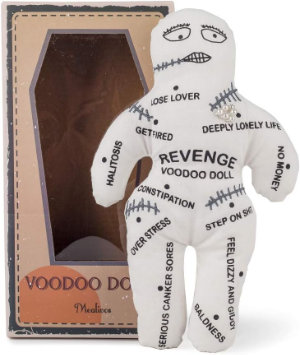
In voodoo, the use of dolls is a symbolic representation of the person being helped. The doll is typically made from natural materials such as cotton or clay and is infused with the energy of the person being helped. Through the use of prayers and rituals, the doll is then used to focus positive energy and intentions toward the person.
For example, if someone is suffering from an illness or injury, a voodoo priest or priestess may create a doll in their likeness and use it to channel healing energy toward them. Alternatively, if someone is in need of protection, a doll may be created to represent them and used to ward off negative energy or harmful spirits.
It is important to note that voodoo dolls are not used for revenge or to cause harm to others. In fact, using the energy of voodoo dolls to harm others goes against the principles of voodoo, which emphasizes the importance of living in harmony with others and the divine.
Zombies in Voodoo: Fact or Fiction?
Zombies have long been associated with voodoo, but the truth about their role in the religion is often misunderstood. In voodoo, zombies are not the flesh-eating undead depicted in popular culture, but rather individuals who have been brought back to life through magic.
In voodoo, a zombie is created through a combination of herbs, animal parts, and spells. The process is said to be very dangerous and can only be performed by a skilled practitioner. Once created, the zombie is under the control of the person who created it and can be used for various purposes.
Contrary to popular belief, zombies in voodoo are not mindless automatons. They are fully conscious and aware of their surroundings, but their will is suppressed by the magic that brought them back to life. In some cases, zombies are created to be used as slaves or laborers, while in other cases they are used for revenge or punishment.
It is important to note that the creation and use of zombies is not a widely accepted practice in modern voodoo. Many voodoo practitioners view it as a form of black magic and do not condone its use.
Voodoo Ritual Objects and Symbols
The Veve: Sacred Sigils of Voodoo
One of the most distinctive aspects of voodoo is the use of veves, intricate and often beautiful symbols that are used in rituals and ceremonies.
Veves are typically drawn on the ground using various materials such as cornmeal, flour, or powdered eggshells. They are used to create a sacred space and to invoke the presence of the spirits, or loa, that are central to voodoo worship.
Each loa has its own veve, which is a unique and highly stylized symbol that represents the spirit’s qualities and characteristics. For example, the veve of Papa Legba, the loa of the crossroads, is a complex and intricate design that includes a stylized cross, a sunburst, and a series of interconnected lines and curves. The veve of Erzulie, the loa of love and beauty, is a simpler design that features a heart shape with a series of smaller circles and lines around it.
Veves are not just decorative symbols; they are living things that have power and energy. When the veve is drawn, the loa is called forth and becomes present in the ceremony. The veve acts as a bridge between the physical world and the spiritual world, allowing the loa to communicate with the worshippers and to help them with their problems and concerns.
The creation of a veve is a complex and highly ritualized process. The priest or priestess who is creating the veve must first purify the space by sprinkling it with water or alcohol. They then draw the veve using a special technique that involves sprinkling the material onto the ground in a precise pattern.
As the veve is created, the priest or priestess chants prayers and invocations to the loa, calling forth their presence and asking for their blessings. The veve is then consecrated with offerings of food, drink, and other gifts, which are placed on or around the symbol.
The use of veves in voodoo is a powerful and deeply symbolic practice that connects the worshippers with the spirits and with the rich history and culture of this ancient religion. While the symbols themselves may be beautiful and intricate, their power lies in their ability to create a sacred space and to invoke the presence of the loa.
Ritual Tools and Potions
An intriguing aspect of voodoo is the use of ritual tools and potions, which are used to create sacred spaces, invoke the presence of spirits, and perform powerful spells and rituals.
One of the most important ritual tools in voodoo is the ceremonial knife or machete. This knife is used to cut away negative energy and protect the practitioner from harm. It is also used to offer sacrifices to the spirits, and to cut herbs and other materials for potions and spells.
Another important tool is the voodoo doll, which is used to represent a person or entity in a spell or ritual. The doll is often made from cloth or other materials and is imbued with the energy of the person or entity it represents. The practitioner may use the doll to perform spells and rituals that affect the person or entity, such as healing, protection, or revenge.
Potions are also important and these are often made from herbs, roots, and other natural materials, and are used to create magical effects such as love, healing, and protection. Some of the most common potions used in voodoo include love potions, protection potions, and healing potions.
One of the most powerful and complex potions in voodoo is the zombie potion.
Talismans and Amulets
Talismans and amulets are powerful tools used in voodoo to create a spiritual connection and provide protection. These objects are often made from natural materials and are charged with energy through rituals and spells. In voodoo, talismans and amulets are used for various purposes, including love, prosperity, and protection from harm.
One of the most common talismans used in voodoo is the mojo bag. This bag is filled with herbs, roots, and other materials that are believed to have magical properties. Mojo bags are often carried on the person to provide protection and attract good luck.
Another popular talisman is the gris-gris bag. This bag is similar to the mojo bag but is often used for more specific purposes, such as love or money. Gris-gris bags are also used in spells to harm or curse an enemy.
Amulets are similar to talismans but are often worn as jewelry. In voodoo, amulets are believed to provide protection and ward off evil spirits. One of the most common amulets is the eye of Horus, which is believed to provide protection and insight.
The use of talismans and amulets in voodoo is not limited to just physical objects. Symbols and sigils are also used to create a spiritual connection and provide protection. The veve, for example, is a symbol used to invoke the presence of a specific spirit in voodoo rituals.
It is important to note that the use of talismans and amulets in voodoo is not solely for personal gain. Many practitioners use these tools to help others and promote healing. For example, a talisman or amulet could be created to help a sick loved one recover.
Final thoughts
Voodoo today is a rich belief system that is filled with historical significance to practitioners. Misunderstood and maligned by pop culture and general ignorance, believers are often faced with challenges and fear. Unfortunately, this is normalized even in the ‘capital’ of Voodoo, New Orleans, where VooDoo shops are around every corner trading on the sensationalized stereotypical version of Voodoo selling shrunken heads, Voodoo dolls, and homemade zombie potions.
Hopefully, this article has helped you understand what Voodoo is, and is not. Maybe you are even intrigued to look deeper into this fascinating amalgamation between belief systems.


